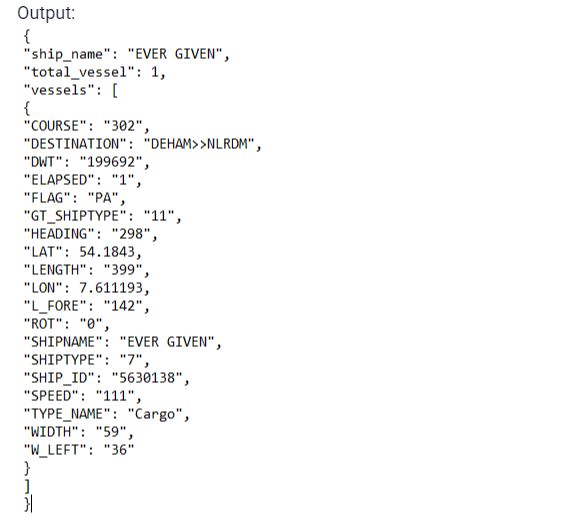3 Benefits Of Using An API To Search For Maritime Traffic Data
If you’re interested in using a ship position API, but aren’t sure where to start, this article is for you. We’ll explore the benefits of using an API, how to choose one, and much more.
An API that provides live information about vessels at sea has numerous benefits, both for businesses and individuals. In this article, we’ll explore the advantages of such an API and how it can be useful for different types of users. First, let’s define what we mean by a “vessel tracking API.” This refers to an application programming interface (API) that provides real-time or near-real-time data about ships and other vessels on the water. This data might include the vessel’s current location, course, speed, and other relevant information.
One of the most significant advantages of a vessel tracking API is that it can improve safety and security on the water. For example, if you’re operating a shipping company or managing a port, you can use a vessel tracking API to monitor your vessels and ensure that they’re following safe routes and procedures. This can help you identify potential safety risks and take steps to mitigate them before an accident occurs.
Similarly, if you’re a government agency responsible for maritime security, you can use a vessel tracking API to monitor vessels in your jurisdiction and identify any that might be engaged in illegal activities, such as smuggling or piracy. This can help you take proactive measures to prevent these activities and keep your waters safe and secure. Another key benefit of a vessel tracking API is that it can improve logistics and supply chain management. If you’re a shipping company or logistics provider, you can use a vessel tracking API to monitor your vessels and ensure that they’re on schedule and following the most efficient routes. This can help you optimize your supply chain and reduce costs. In addition, a vessel tracking API can help you track your cargo more effectively. By knowing the location and status of your vessels in real-time, you can keep your customers informed about when their shipments will arrive and be better equipped to handle any issues that arise.
So How Does An API Work?
The digital transformation has made it possible for individuals and organizations to have access to thousands of applications and user interfaces with the aim of streamlining their daily routines and processes, even in an integrated manner. And APIs were specifically created to integrate various applications. Now that you know everything there is to know about using a ship position API; you’re ready to get started! Try out Vessel Traffic Information API and see how easy it is to get started.
To make use of it, you must first:
1- Go to Vessel Traffic Information API and simply click on the button “Subscribe for free” to start using the API.
2- After signing up in Zyla API Hub, you’ll be given your personal API key. Using this one-of-a-kind combination of numbers and letters, you’ll be able to use, connect, and manage APIs!
3- Employ the different API endpoints depending on what you are looking for.
4- Once you meet your needed endpoint, make the API call by pressing the button “run” and see the results on your screen.



